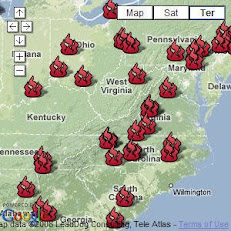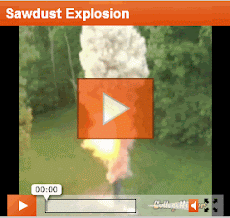Defining ‘world-class’ safety
What does the phrase mean, and how can organizations achieve world-class status?
February 21, 2016
Key points
- According to some experts, “world class” can be considered a catch-all phrase to describe how positive a safety culture is, and where an organization stands when compared to others in their industry.
- Other safety practitioners describe world-class safety as measurable achievement.
- Another expert says world-class safety is not an award or championship, and requires a sustained effort.
As Safety+Health found out when pursuing these questions, the answers are complex.
“I think the term is used very loosely. Everyone has their own definition,” said Tony Sykes, an Indianapolis-based health, safety and environmental consultant for Eli Lilly and Co.
Some, like Kevin Feeman – a total safety culture facilitator for a Union Pacific facility in Carson, CA – believe “world class” is “too ambiguous, too subjective and too meaningless.” Instead, Feeman said, organizations should “work toward your unified, success-oriented goals.”
Still, other experts who spoke with S+H pointed out a number of characteristics that could make up the backbone of world-class safety.
Defining the term
world-class safety is one that moves toward zero incidents and includes continuous improvement. “No organization is ever going to be perfect,” she said. “A world-class organization is one where you never think you’re good enough.”
Her viewpoint is similar to that of Sykes, who said that when speaking with senior management, he avoids using the term “world-class safety” too often – focusing instead on whether the organization is at the top of its game.
“What we want to drive toward is being the best we’re capable of, and being able to measure what ‘good’ is,” he said.
Sykes said “world-class safety” can be useful as a catch-all phrase for achieving a certain safety status, and being able to measure that status.
To a degree, world-class safety is used in a very generic sense, and world-class performance can be measured in a number of ways, according to Jim Johnson. Johnson is the former vice president of workplace safety initiatives for the National Safety Council and current vice president, partnerships, for DEKRA Insight.
Johnson believes most people understand that the term is reserved for organizations that have distinguished themselves through their safety performance and have evidence to support it.
A measureable achievement
“I don’t think it’s like winning the World Series. I think it’s a compilation of characteristics that define a company,” said Mike White. White is a member of the World Class Team – a group of safety
professionals who work to further the goals of the Campbell Institute of the National Safety Council. (For more information on the Campbell Institute, visit www.thecampbellinstitute.org.) He worked for four decades at General Motors, most recently as director of global safety programs.
Leadership, and how well safety is integrated into business operations, can help define whether an organization is world class, White said. (See “World-class safety management”.)
These characteristics can be measured and used to evaluate safety performance. According to Bill Bozzo, a consultant who recently retired as the vice president of environment, safety, health and sustainability for DM Petroleum in New Orleans, measurements can include employee engagement, training, involvement of safety committees and injury rates. These leading and lagging metrics can then be used to mathematically assess where an organization stands compared with others.
One tool to perform these calculations is the DuPont Bradley Curve, which assigns a value to companies’ performances and charts it. Companies are then plotted on the chart, which features a curve sloping down to the right. The far right of the curve – the lowest point in the curve – denotes a belief in zero injuries as an achievable goal, as well as an organization with teams of employees taking ownership and responsibility for safety. An organization on the far right of the curve, according to Sykes, whose company uses the DuPont Bradley Curve, signifies a relative safety culture strength score of at least 80 percent that aligns with low recordables and is among the best benchmark
companies that have participated in the past. This could be considered the tipping point as to whether an organization has achieved world-class safety status, he said.
World-class safety in and of itself may not be an award or dependent on such recognition, but some awards can be used as evidence of an organization having achieved world-class status. The Robert W. Campbell Award, given out by the Campbell Institute, is cited by some safety professionals as one example.
According to Johnson, the Campbell Institute identifies past winners as world class, and the award is reserved for companies with performance metrics and other indicators that set them apart from the majority of employers.
These measures aren’t based on profits or size because world class isn’t limited to multi-billion-dollar global companies, Johnson added. Small, family-owned businesses can and do achieve a reputation for having world-class safety.
“When it comes to a world-class level of performance for safety and health, industry doesn’t matter, the size doesn’t matter,” he said. “Any organization can achieve that standard by enhancing the right culture and committing to sustainable management systems for health and safety.”
Losing it
According to Bozzo, an organization that wants to be considered world class must remain at the cutting edge of safety. He cautioned that what is cutting edge today could become commonplace tomorrow, and maintaining status quo could lead to falling behind organizations that are pushing
the envelope.
Culture plays an important role in determining world-class safety, Johnson said, because it creates the environment for systems to achieve excellence. He added that it can take years to get the right safety
culture in place, but loss of it can occur overnight (e.g., a change in leadership with reduced focus on safety).
Although most organizations capable of achieving world-class status have a strong safety culture with the appropriate processes in place to recognize and minimize risks, Sykes cautioned that culture still could decay if the organization rests on its laurels.
Johnson agreed.
“If a company has a culture that tends to believe in their own success, they may not hear the messages on opportunities to improve,” he said.
Bozzo speculated that some organizations may fall into a trap – they believe they’re “already there,” so they don’t need to push for continuous safety improvement. What those organizations should be
saying, he said, is “We need to do this because we’re world class.”
Although injuries, illnesses and deaths could indicate that a company has fallen from its world-class status, several stakeholders who spoke with S +H suggested that this isn’t always the case.
“Black swan” events – occurrences that exist but are rare – are unexpected. How an organization reacts to them helps define its integrity and world-class status, according to Bozzo.
Dresser-Rand experienced this in 2011 when a worker died on the job. It was the company’s first – and to date only – on-the-job fatality since being incorporated, Raines said. “You take it as a learning moment,” she said. “We took it extremely seriously and we really learned a lot from it, and put in policies and processes to ensure that would never happen again.”
A timely response to incidents, learning from them and working to minimize the possibility of another incident is what world-class companies do, Bozzo said. Such employers also take these steps with full disclosure and share their knowledge. Not only is this knowledge shared internally, but world-class companies share their bad experiences and solutions with others – both in and outside their peer groups, he added.
Injury rates alone don’t always paint the picture. If an organization has low rates one year and high rates the next, Sykes said, that company likely did not have world-class safety in the first place.
“You didn’t have all the elements in place and your system decayed,” he said. What may be the case in this situation was the company had a positive safety climate the first year, but that was not a reflection of the company’s overall safety culture. (Climate can be described as the measurement of safety in the short term, while culture is a sustained safety effort.)
Achievement
Although an organization can decide to go on this journey, Bozzo warned that it should not declare itself “world class.”
Sykes agreed that the term carries more weight when coming from others, but said sometimes an organization knows itself better than anyone else. However, he stressed that any company must be able to show its methods of measuring its performance to back up a world-class safety claim. Without evidence, such a claim would not be taken seriously.
Employers need to be able to show what sets their group above other entities, Raines said, and outside recognition and robust internal procedures both provide evidence as to whether an organization is truly world class.
In Raines’ opinion, Dresser-Rand meets these criteria. “It is not even a priority for us. It’s a value,” she said of safety. “It’s critical all the time.”
In addition to recognition from clients and outside groups, Raines cites Dresser-Rand’s uniform global disciplined processes that surpass regulatory requirements, employee engagement with a successful stop-work authority program, and strong leadership where the highest-level individuals are held accountable for their commitment to safety.
Becoming a world-class safety company does not necessarily mean it will sell more product, White said, but it can help drive its overall performance.
Bozzo suggested something similar. “World class has to do with how well you recognize your business and what the risks are in your businesses, and how effective you are at controlling that,” he said. “World class is all about doing it well.”









 RSS Feed Subscribe
RSS Feed Subscribe